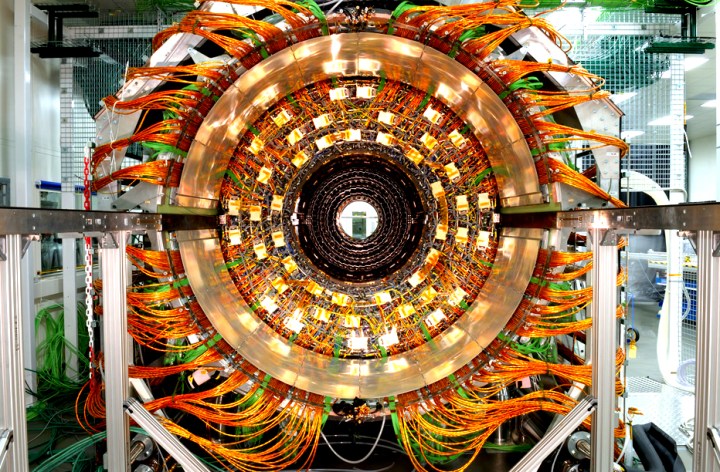Multimedia, Sci-Tech
The Large Hadron Collider is back with a big bang

Things are really whizzing back to life at the Large Hadron Collider. Weeks after a bird wrestling with a piece of baguette (bet you it was smothered in brie and pickle too) shorted a mains electricity connection, the 27km circuit buried 175m under the Franco-Swiss border is back with another kind of bang – the one that aims to replicate conditions just after the “Biggest Bang” of all time created everything. Or so they say.
An initial major electrical fault saw the LHC overheat nine days after its launch in September 2008. But after more than a year of repairs, and overcoming the latest electrical glitch, the newly refurbished device is starting to yield the results for which it was designed. A tentative start on the weekend saw scientists circulate low-energy proton beams in both directions round the world’s biggest doughnut. Now physicists have smashed together protons travelling at nearly the speed of light (about 300,000km a second) inside the world’s largest particle accelerator.
The collision occurred at relatively low energy—900 billion electron volts (GeV), with each beam supplying 450 GeV. The researchers will now attempt to accelerate the beams to 1.2 teraelectron volts (TeV), which will be the highest energy level achieved by any such device. An electron volt is the amount of kinetic energy gained by a single unbound electron when it accelerates through an electrostatic potential difference of one volt (which means they go round the accelerator at 11,000 times each second).
The “brie and pickle” incident (Cern, Europe’s organisation for nuclear research, confirmed it was a hungry bird eating a worker’s packed lunch and not something dropped from a plane) was the latest in a string of teething problems for the $10 billion über-machine. But the forthcoming test will vindicate the rationale behind the LHC as it will exceed the energy output of the world’s current most-powerful accelerator near Chicago. Fermilab’s Tevatron accelerator is only 6.3km in circumference, so the LHC is expected to perform like a super-jumbo jet with after-burners.
By Mark Allix
Read more: National Geographic
WATCH: Large Hadron Collider video
Large Hadron Collider video:














 Become an Insider
Become an Insider